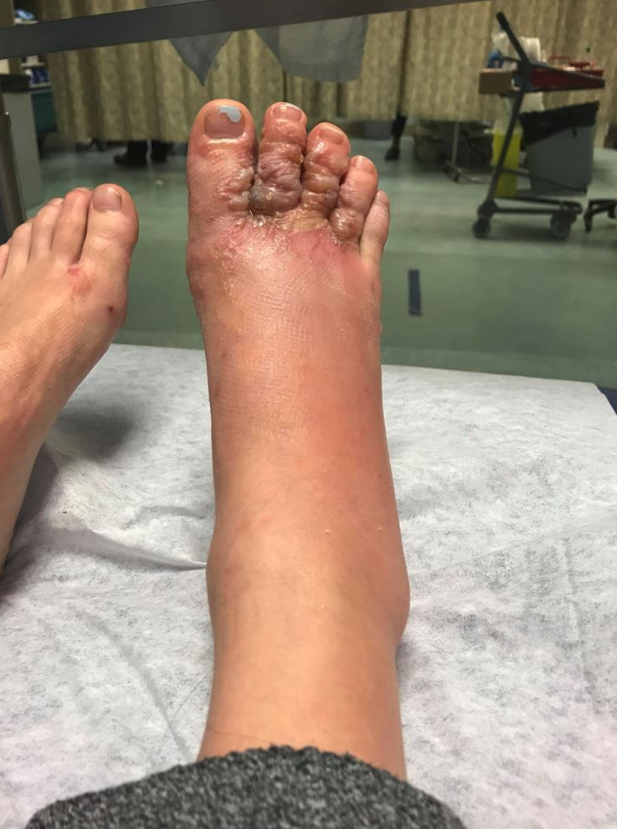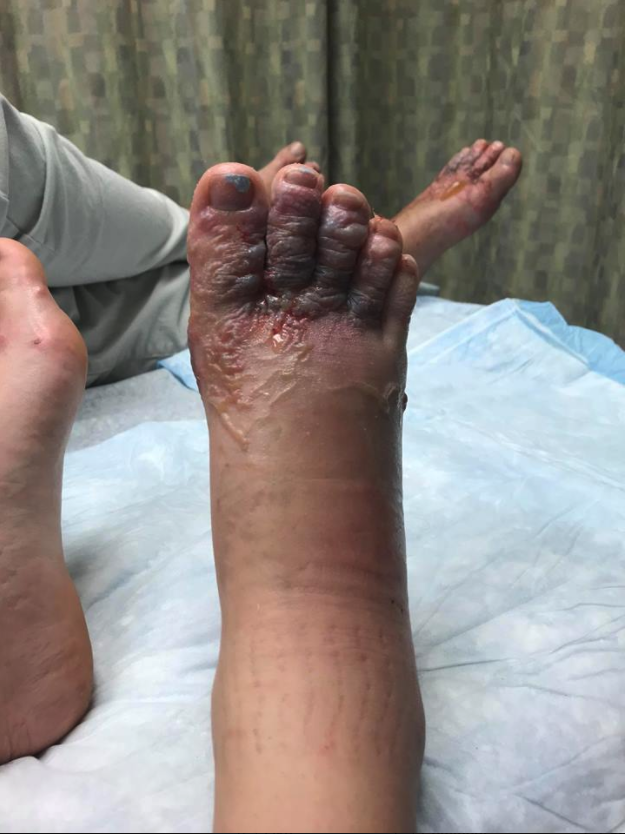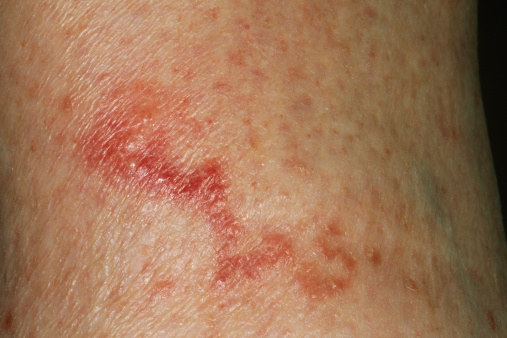Warning: graphic photos of worms in feet ahead.
This is 22-year-old Katie Stephens and her boyfriend, Eddie Zytner. The Canadian couple recently went on a beach vacation in the Dominican Republic, but they returned with a little more than just good memories.

Photo courtesy of Katie Stephens / Via facebook.com
They both developed cutaneous larva migrans, a skin infection caused by hookworms. Stephens posted pictures of her massively swollen, blistered feet on Facebook, where they went viral.
According to the Facebook post, Stephens and her boyfriend believe they picked up the parasites while walking on the beaches of Punta Cana, in the Dominican Republic, where they were staying at an oceanside resort.
"We did a couple excursions but other people contracted this parasite and they didn't come on the excursions with us, so it would have had to been on the resort or beach where we got it," Stephens told BuzzFeed News in a Facebook message.
"We simply thought it was bug bites and it became worse as each day passed," Stephens wrote. The couple wasn't diagnosed until several days after returning to Canada, when they finally went to a hospital.

"We didn't know we had the hookworm until a doctor diagnosed us on the third day at the hospital. We got home on the 18th and visited the hospital on the 20th but it wasn't until the 22nd that we were diagnosed with hookworm, that a doctor knew what it was," Stephens said.
Photo courtesy of Katie Stephens
Things only got worse. "The hospital said our case wasn't severe enough to receive the medication," Stephens said. The couple said they eventually had to get medication in the US.

"[They] denied our request to receive the medicine (ivermectin) we needed to treat our infection and were forced to get medicine from the states," Stephens wrote in the Facebook post.
Photo courtesy of Katie Stephens
Biology Media / Getty Images / Via gettyimages.com
The infection often looks like a bug bite or rash at first, but it turns into a painful, snake-shaped blister. Luckily, hookworms are easy to treat.

The hookworms are so tiny that most people don't even notice it when they enter the skin through the bottom of the foot. "You might feel a slight itch or see a rash but most people think it's a mosquito bite or a blister from their shoes at first, so it's easy to miss at first — but in a few days, it can become very painful," Michele S. Green, an NYC-based dermatologist, tells BuzzFeed News.
"The foot will become very itchy and inflamed, but you can actually tell where the larva is migrating through the skin because it creates red, squiggly raised lines in the shape of a serpent," Pritt says. As you can tell by the photos in this post, it looks pretty gross.
The good news? Humans are a dead-end host for these little guys. "The hookworms that cause cutaneous larva migrans can't complete their life cycle in humans, so they will eventually die in a few weeks," Pritt says. But the infection is also very easy to treat, and the right medication will kill the larvae and ease symptoms in a day or two. "Anthelmintics are drugs that rid the body of worms, like ivermectin, and are widely available in most countries," Green says.
Gregory Md. / Getty Images / Via gettyimages.com
The best way to protect yourself is by wearing shoes on the beach in tropical areas or going to a private, dog-free area.

"The first precaution you can take is to wear closed-toed shoes on the beach, but that’s obviously not appealing, so you can also try contacting the place you are staying to ask if it is a private beach that is fenced off so dogs can't get in," Pritt says. Hookworm is a relatively common infection, so it's a risk when you travel to any tropical area, but the bottom line is you shouldn't walk barefoot in any area which you think could be contaminated — whether that's a beach or a park or a hiking trail.
"Another great thing people can do is to go to a travel clinic before your trip and they can tell you specifically what to look out for and whether you need certain medications or vaccines beforehand based on where you are going," Pritt says. Besides hookworm, there are other parasitic and bacterial infections and mosquito-borne diseases in tropical areas that can be a lot more serious.
Picturegarden / Getty Images / Via gettyimages.com
from BuzzFeed - Health http://ift.tt/2DPv12g
via IFTTT

